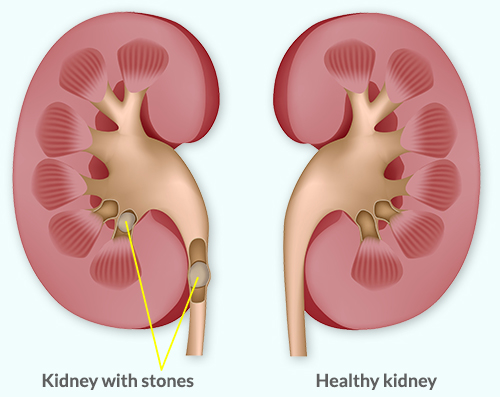Kidney and urinary stones are common medical conditions that can cause significant discomfort and lead to serious health complications if left untreated. These stones form when minerals and other substances crystallize in the kidneys or urinary tract. To effectively diagnose, treat, and prevent stone formation, it is essential to understand the underlying science and the key factors that contribute to their development. This article delves into the mechanisms of stone formation and the various influences that affect their growth.
The Science Behind Kidney and Urinary Stone Formation
Kidney and urinary stones, also known as renal calculi or urolithiasis, are solid concretions formed from dissolved urinary minerals. The process begins when the concentration of stone-forming substances, such as calcium, oxalate, and uric acid, exceeds their solubility in urine. When this supersaturation occurs, these substances start to crystallize, forming microscopic particles. Over time, these particles aggregate and grow into larger stones.
The urinary system plays a crucial role in maintaining a balance of fluids and electrolytes. The kidneys filter waste products and excess substances from the blood, which are then excreted in the urine. However, when urine becomes too concentrated or the balance of crystallization inhibitors is disrupted, conditions become favorable for stone formation. Certain proteins and molecules, such as citrate and magnesium, usually prevent crystal formation, but if their levels are insufficient, the risk of stone development increases.
A stone’s composition can vary, with the most common types being calcium oxalate, calcium phosphate, uric acid, and struvite stones. Each type has distinct characteristics and forms under specific chemical conditions. Calcium oxalate stones, for instance, form in acidic to neutral pH levels, while uric acid stones typically develop in persistently acidic urine. Understanding the chemical environment that promotes each type of stone is essential for effective prevention and treatment strategies.

Key Factors Influencing Stone Development and Growth
Several factors influence the formation and growth of kidney and urinary stones, with dietary habits being one of the most significant. High intake of oxalate-rich foods, such as spinach, nuts, and chocolate, can elevate the risk of calcium oxalate stones. Likewise, excessive consumption of protein and salt can increase calcium excretion in urine, contributing to stone formation. Hydration is also critical; inadequate fluid intake leads to concentrated urine, fostering an environment conducive to stone formation.
Genetic predisposition is another crucial factor. Individuals with a family history of kidney stones are at a higher risk of developing them themselves. Certain genetic disorders, such as cystinuria and primary hyperoxaluria, result in elevated levels of stone-forming substances in the urine, significantly increasing the likelihood of stone formation. Additionally, metabolic conditions like hyperparathyroidism and gout can alter the balance of minerals and other substances in the body, promoting stone development.
Medical conditions and medications can also impact stone formation. Chronic conditions such as inflammatory bowel disease, obesity, and diabetes can change the composition of urine, increasing the risk of stones. Some medications, like diuretics and calcium-based antacids, can elevate calcium levels in urine, while others might reduce citrate excretion, both of which may contribute to stone formation. Patients with recurrent urinary tract infections may develop struvite stones, which form in alkaline urine environments created by certain bacteria.
Understanding the formation of kidney and urinary stones involves a comprehensive look at the biochemical and environmental factors that contribute to their development. By identifying and managing the key influences, such as diet, genetic predisposition, and underlying medical conditions, healthcare providers can better prevent and treat these painful and potentially severe conditions. Ongoing research continues to uncover new insights, paving the way for improved management strategies and better patient outcomes.


